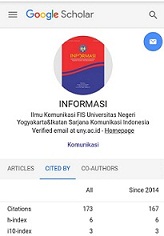Doctor-Patient Communication in Tanzanian Public Hospitals: Language Use, Code-Switching, and Accommodation Strategies
Keywords:
Doctor-patient communication, language barriers, code-switching, health communication strategiesAbstract
This study examined how language use and communication strategies influence doctor-patient interactions in Tanzanian public hospitals. Guided by Communication Accommodation Theory, the study focused on Amana, Mwananyamala, and Temeke Regional Referral Hospitals. Using a phenomenological qualitative design, data were collected through observations, interviews, and document reviews from 90 participants (30 doctors, 30 nurses, and 30 patients). Data were analyzed using NVivo 12 software, enabling thematic coding and sentiment analysis. Findings revealed that Swahili was the dominant language, but code-switching with English was common, particularly for technical terms. While simplification, analogies, non-verbal cues, and occasional third-party interpretation improved understanding, excessive or unexplained English terms led to confusion especially among elderly or less-educated patients. Cultural and linguistic mismatches further hindered communication when doctors failed to adapt to patients' backgrounds. The study recommends Swahili communication training, standardized bilingual materials, and integration of communication skills into medical education. These findings contribute to efforts toward linguistically inclusive and culturally responsive healthcare in Tanzania.
References
Aguzzoli, R., Lengler, J., Miller, S. R., and Chidlow, A. (2024). Paradigms in qualitative IB research: Trends, analysis and recommendations. Management International Review, 64, 165–198.
Ali, P. A., and Watson, R. (2023). Language barriers and their impact on healthcare outcomes: A systematic review. Nursing Open, 10(1), 5–14.
Al Shamsi, H., Almutairi, A. G., Al Mashrafi, S., and Al Kalbani, T. (2020). Implications of language barriers for healthcare: A systematic review. Oman Medical Journal, 35(2), e122.
Camara, B. S., Delamou, A., Diro, E., Beavogui, A. H., El Ayadi, A. M., and Okeke, I. N. (2020). What do we know about patient-provider interactions in sub-Saharan Africa? A scoping review. Journal of Global Health, 10(2), 1–11.
Creswell, J. W., and Poth, C. N. (2018). Qualitative inquiry and research design: Choosing among five approaches (4th ed.). Sage Publications.
deMarrais, K., Roulston, K., and Copple, J. (2024). Qualitative research design and methods: An introduction. Myers Education Press.
Denzin, N. K., and Lincoln, Y. S. (Eds.). (2018). The SAGE handbook of qualitative research (5th ed.). Sage Publications.
Elkefi, H., and Asan, O. (2024). Patient-centered communication's association with trust, satisfaction, and perception of technology use during initial oncology visits. Frontiers in Communication, 9, 1391981.
Ferguson, W. J., and Candib, L. M. (2002). Culture, language, and the doctor–patient relationship. Family Medicine, 34(5), 353–361.
Flores, G. (2022). Language barriers to health care in the United States. New England Journal of Medicine, 386(8), 748–757.
Giles, H. (2016). Communication accommodation theory: Negotiating personal relationships and social identities across contexts. Cambridge University Press.
Gonzalez, C. M., and Vega, W. A. (2024). Addressing language barriers in healthcare: Strategies for improving patient-provider communication. Health Affairs, 43(2), 230–238.
Hsieh, E., and Kramer, E. M. (2021). Medical interpreters as co-diagnosticians: Overlapping roles and services between providers and interpreters. Patient Education and Counseling, 104(4), 839–845.
Isangula, K. G. (2020). What factors shape doctors' trustworthiness? Patients' perspectives from rural Tanzania. Rural and Remote Health, 20(3), 5826.
Karliner, L. S., and Pérez-Stable, E. J. (2022). Language barriers and health disparities. Annual Review of Public Health, 43, 193–209.
Kinyenje, E., Mboera, L. E. G., Rumisha, S. F., and Sigalla, G. N. (2023). Patient-provider interaction in primary healthcare facilities in Tanzania: Findings from Star Rating Assessment. Journal of Service Science and Management, 16(1), 70–85.
Langewitz, W., Mbugua, G. G., Ong'udi, D., McKenzie, M., and Pala, A. (2017). Health care provider communication training in rural Tanzania: A qualitative study of the implementation of a patient-centered approach. HIV Medicine, 18(Suppl 1), 44–51.
Leavy, P. (Ed.). (2020). The Oxford handbook of qualitative research (2nd ed.). Oxford University Press.
Mboya, R., Kahwa, A., and Mushi, D. (2022). Multilingualism and medical communication in sub-Saharan Africa: A Tanzanian perspective. African Journal of Applied Linguistics, 14(2), 78–92.
Mchome, E., Mazrui, L., and Komba, D. (2022). Language use and communication challenges in Tanzanian healthcare settings. Dar es Salaam University Press.
Mganga, D., and Mtenzi, J. (2023). Language and healthcare: Addressing communication challenges in Tanzanian hospitals. Tanzania Journal of Health Research, 25(1), 55–67.
Mkony, C., Kaaya, E., and Lwakatare, S. (2020). Improving patient-provider communication in Tanzanian public hospitals: Insights from medical professionals. East African Medical Journal, 97(3), 120–128.
Mlay, V., and Lugalla, J. (2021). Language barriers and health service delivery in Tanzania: A sociolinguistic perspective. Tanzania Journal of Health Research, 23(3), 45–57.
Meuter, R. F. I., Gallois, C., Segalowitz, N. S., and Ryder, A. G. (2021). Overcoming language barriers in healthcare: A protocol for investigating safe and effective communication when patients or clinicians use a second language. BMC Health Services Research, 21, 104.
Nyoni, T., and Marealle, A. (2023). Barriers to effective communication in rural healthcare settings: The role of language and cultural mismatches. Journal of African Health Communication, 8(1), 44–59.
QSR International. (2018). NVivo 12 for Windows [Computer software]. https://www.qsrinternational.com/nvivo-qualitative-data-analysis-software/home
Silverman, J., Kurtz, S., and Draper, J. (2016). Skills for communicating with patients (3rd ed.). CRC Press.
Silverman, J., Kurtz, S., and Draper, J. (2020). Skills for communicating with patients (4th ed.). CRC Press.
Squires, A., and O'Brien, M. J. (2021). Language barriers and health literacy: Impact on patient safety and quality of care. Annual Review of Nursing Research, 39(1), 1–40.
Watson, J., and Forshaw, M. (2022). The role of language concordance in healthcare interactions: A scoping review. Patient Education and Counseling, 105(3), 719–729.
World Health Organization. (2021). Patient-centered communication strategies for quality care. WHO Regional Office for Africa. https://www.afro.who.int/publications/patient-centered-communication
Yadav, D. (2022). Criteria for good qualitative research: A comprehensive review. The Asia-Pacific Education Researcher, 31, 679–689.
Downloads
Published
How to Cite
Issue
Section
Citation Check
License
Copyright (c) 2025 PRISCA BONIPHACE MAKULILO

This work is licensed under a Creative Commons Attribution-NonCommercial 4.0 International License.
Authors who publish with this journal agree to the following terms:
- Authors retain copyright and grant the journal right of first publication with the work simultaneously licensed under a Creative Commons Attribution License that allows others to share the work with an acknowledgement of the work's authorship and initial publication in this journal.
- Authors are able to enter into separate, additional contractual arrangements for the non-exclusive distribution of the journal's published version of the work (e.g., post it to an institutional repository or publish it in a book), with an acknowledgement of its initial publication in this journal.
- Authors are permitted and encouraged to post their work online (e.g., in institutional repositories or on their website) prior to and during the submission process, as it can lead to productive exchanges, as well as earlier and greater citation of published work (See The Effect of Open Access).











